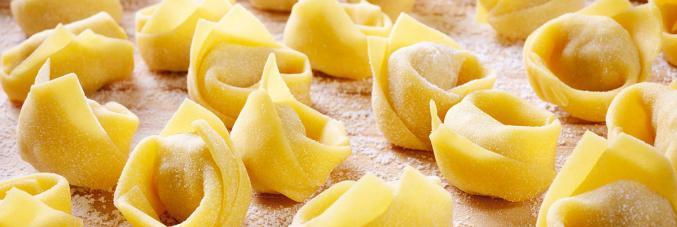
Unipd Research - Investigating the Evolution of the Italian pasta ripena
24.07.2024
The array of Italian culinary culture is closely intertwined with its history, geography, and biology. Pasta dishes, culturally seen as a staple of Italian cuisine, and the origins of traditional pasta recipes is often the subject of heated discussions.
As one of the most iconic elements of Italian culture, the study Evolution of the Italian pasta ripiena: the first steps toward a scientific classification (Vazrick Nazari, Antonella Pasqualone, Andrea Pieroni, Valentina Todisco, Sofia Belardinelli, Telmo Pievani) led by a group of researchers from the Department of Biology of the University of Padua and recently published in the magazine Discover Food, investigates the origins of stuffed pasta. The work takes on a scientific method that reconstructs the origins and evolution of the great variety of Italian stuffed pasta. The research offers highlight into the abondance of Italy’s biocultural diversity.
Using recipes from the legendary volume by Pellegrino Artusi Science in cooking and the art of eating well (1891) alongside popular cookbooks focused on pasta and additional online resources, a dataset separated Eurasian filled pastas (such as Japanese gyoza, German maultaschen, Polish pierogi, Russian pelmeni...) from those specifically defined as Italian ones. A selection was made of 28 entries such as the national and internationally enhoyed ravioli and tortellini as well as local specialties such as Sardinian Culurgiones to Friulian cjarsons to Romagna cappelletti.
By analyzing the various characteristics of this pasta "family" (dough ingredients, type of filling, cooking method, size, folding, etc.) and the geographical distribution of the recipes, the research team developed a phylogenetic tree that reconstructs the probable origin and diffusion of stuffed pasta in Italy, as well as its progressive differentiation into different regional and local forms.
The results of the analysis show that it is very likely that stuffed pasta, which originated in Eurasia, first arrived in Northern Italy, and from there spread to the rest of the Peninsula following an initial reduction in morphological variability (outside the biological metaphor, the variety of recipes) due to a sort of “founder effect”.
The phylogenetic tree also allows us to reconstruct the relationships between the different forms of stuffed pasta. A main distinction is evident between two large "families", that of tortellini (more three-dimensional, in the photo above) and that of ravioli (flatter, in the photo below). Both groups appear to originate from northern Italy, where in fact most of the formats taken into consideration for the analysis are concentrated.
It is interesting to note that, in all the analyzes carried out, a single format of Italian stuffed pasta is always recognized as external to these two large families: the Sardinian culurgiones. This suggests that, in Sardinia, the cultural practice of cooking stuffed pasta may have originated independently of Northern Italy.



